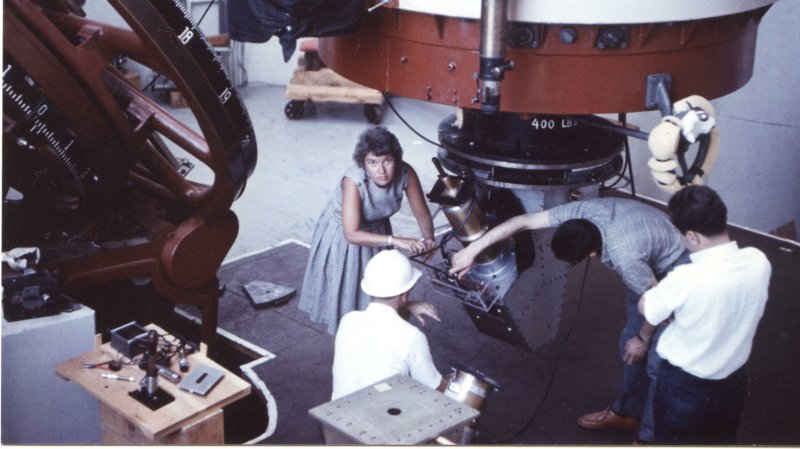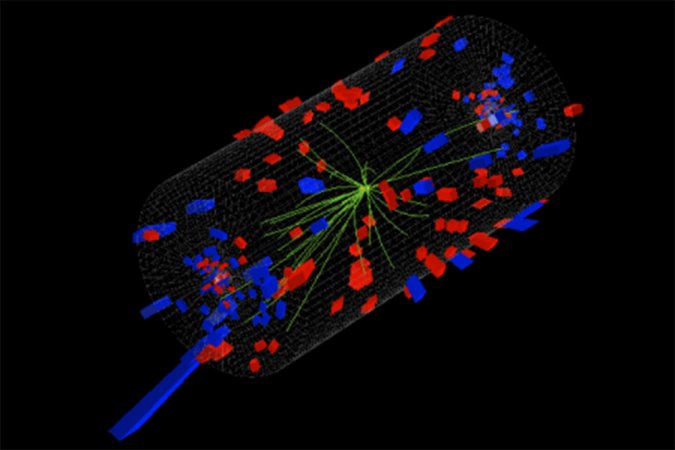

A tiny particle that acts like a wave is gaining ground as the explanation for dark matter, according to a pair of scientific reviews published this week.
The theoretical particles called axions could be scientists’ best bet for explaining dark matter—the elusive stuff that makes up 85 percent of all matter in the universe that barely interacts with our “regular” matter. Two new reviews show how this particle went from runner-up to spotlight in recent years. The theories around dark matter have evolved to make these particles more convincing, the reports say. They also explore how scientists might be able to detect axions. Both reports were published this week in Science Advances.
If axions are dark matter, then “there are axions going through you right now,” but you don’t notice because they barely interact, says Francesca Chadha-Day, a physicist at Durham University in the UK and an author of the theory review. She also works on TOORAD, an axion detector collaboration.
When she started working on axions a decade ago they were more of a fringe dark matter candidate, she says. They’ve become more prominent since, in large part due to what she says was “the failure of the Large Hadron Collider, or any of the dark matter detectors” to find the favored explanation of dark matter for decades, so-called weakly interacting massive particles (WIMPS).
Both are hard-to-spot theoretical, subatomic particles. So what’s the difference between axions and WIMPS?
WIMPS are a little more substantial—they’re big, heavy neutral particles that are kind of like the center of a heavy atom, says Gray Rybka, a physicist and spokesperson for the Axion Dark Matter eXperiment (ADMX) at the University of Washington who wasn’t involved in either review.
Axions by contrast are less massive, even lighter than the lightest known particle called the neutrino. In being so light they behave strangely.
“The interesting thing about axions is that axion dark matter behaves more like a kind of field covering the whole universe” rather than individual particles moving around, Chadha-Day says.
Every object has what’s called wave-particle duality—meaning things act to some extent like a wave and to some extent like a particle. For example, something tiny like an electron can act like a particle–getting shot through space and colliding with other particles like billiard balls. But it can also act like a wave–combining with other waves and not existing definitely in any one place at a time. But the heavier the object, the less pronounced this effect is–the more it acts like a particle. As part of this wave-nature, axions should weakly interact with light and when surrounded by a magnetic field. If they exist, axions can convert to photons, which are particles of light, and photons back to axions.
The theory review is “a good summary of where the thinking is going,” says Rybka. WIMPS and axions were put forth several decades ago as explanations for dark matter around the same time, Rybka says. They aren’t the only candidates for dark matter, but they are the most prominent.
“At the time, the community mostly favored WIMPS” because they were easier to look for with existing technology, Rybka says. After looking for WIMPS for three decades and finding nothing, “there are people who are getting tired of this idea.”
String theory predicts that axions should exist, as a solution to the puzzle of balancing matter and antimatter in the universe.
[Related: Astronomers may have found a galaxy that formed without dark matter]
Part of the reason for the growing interest in axions is that researchers now have the technology to hunt for them. There’s been “a blooming of ideas of how you would build an experiment to look for [axions],” Rybka says. In the last few years scientists have gone from devising experiments to detect the particles, to “doing searches where we think we have a good chance of discovery.”
So far experiments like ADMX have tried to detect axions by building a chamber with a strong magnetic field, and of a specific size, so that it resonates with a certain mass of axion. It’s sort of like how two differently sized instruments—a violin versus a cello—would hum as they pick up different ambient sounds of higher or lower pitch. This resonance would cause more axions to turn into photons in the cavity, Chadha-Day says, and extremely sensitive detectors would pick them up.
ADMX is only sensitive to axions in a narrow range of possible masses. However, experimentalists have thought of clever ways to make detectors that could pick up a wider range of axion masses, Chadha-Day says. This is important because “there’s no reason the universe would be nice to us” and make axions a mass that’s easy to search for, she says.
Astronomers could also potentially observe axions from space by looking at two key places that host magnetic fields: galaxy clusters and neutron stars. Axions would change the spectrum of light coming off matter falling into black holes in the hearts of galaxies. They would also cause neutron stars to emit more light than expected in radio frequencies.
If these ongoing and upcoming experiments don’t find axions in the places scientists expect, theorists will have to go back to the drawing board. But if axions are detected Rybka says, finally, “we’ll know what dark matter is.”
Correction, February 28, 2022: A previous version of this article indicated Chadha-Day led the axion theory review. She is the first author, but not the lead.















